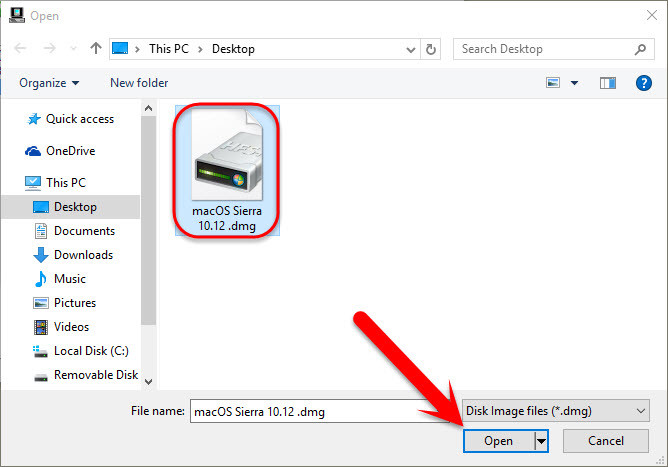

- #Mac os dmg to usb how to
- #Mac os dmg to usb install
- #Mac os dmg to usb full
- #Mac os dmg to usb download
- #Mac os dmg to usb free
#Mac os dmg to usb install
Obviously, you don’t want to install a new macOS and have tons of junk files and unused apps. Why? Well, your Mac might get slow due to system junk and other unneeded files. Back up your dataīefore backing up your data it’s always a good idea to clean your Mac first. Patience: Obviously, this process will take some time so you need to make sure you have an hour or two to spareĪfter making sure everything is ready, it’s time to prepare your Mac for the installation.For this reason, you need an external HD that is at least the same size as your Mac’s internal memory External hard drive (optional): You need to back up your data to save your important files before installing the new macOS.Make sure the installer is fully downloaded (about 5 GB)
#Mac os dmg to usb download

#Mac os dmg to usb free
MacKeeper allows you to free up necessary gigabytes easily. Choosing Not Now will not disrupt the creation of the USB install drive.įor a hands-on look at what’s new in macOS Mojave, be sure to check out our walkthrough of over 50 new changes and features.Please note that before installing any system, you need to ensure there is sufficient space on your Mac. Note: you may see a dialogue menu inquiring about the SetFile command requiring command line developer tools. WARNING: "-applicationpath" is now deprecated. Including the flag will show the following warning message prior to creating the boot disk: The -applicationpath flag that was used in previous tutorials is now deprecated. Select the macOS Mojave Installer to get started. Simply connect your USB flash drive, and restart your Mac while holding the Option (⌥) Key. Once the process is completed, you can use the USB flash drive to boot to the macOS Mojave 10.14 installer. You’ll need to exercise patience as the install process proceeds. Step 15: The install process will start by erasing the contents of your USB drive and copying the installer files to the drive. The entire process can take a while (around 20-30 minutes). Step 14: Type a ‘y’ to continue when prompted, and press return on the keyboard.
#Mac os dmg to usb full
Step 13: Press Return on the Keyboard to submit the full command. Step 12: Drag the USB flash drive volume into the Terminal window. Step 11: Connect your USB drive to your Mac, and it should appear in the Finder window. Step 10: In the Go to the folder box type /Volumes and click Go. Step 8: Type -volume followed by a space. Step 7: Drag createinstallmedia to the Terminal window from the Finder location in Step 4. Step 6: In the Terminal window type sudo followed by a space. Step 5: Open a Terminal window via Applications → Utilities → Terminal.

Step 3: Open Finder → Applications and right-click on Install macOS 10.14 Beta and select Show Package Contents. Subscribe to 9to5Mac on YouTube for more videos

Step 2: Once macOS 10.14 Mojave is downloaded, close the installer that appears using Command (⌘)+Q. Until then, you’ll need to access the Mojave beta from Apple’s developer portal, or (once available) via Apple’s public beta website. Once Mojave 10.14 officially launches, you’ll be able to download it straight from the Mac App Store.
#Mac os dmg to usb how to
Here are a few USB-C-enabled flash drives found on Amazon:īecause this process will erase the contents of the drive, ensure that there is nothing stored on the drive that you need before beginning.Ī USB-C flash drive makes things easy for MacBook users How to create a bootable macOS Mojave 10.14 USB install drive A USB-C flash drive might be best, especially if you’re a MacBook user. Watch our step-by-step video for the details.īefore you start, you’ll need a USB 3.0 flash drive with at least 8GB of storage. This tutorial will work with the current developer beta and will also work once with the public beta and final version of macOS Mojave once released. Creating a bootable macOS Mojave USB install drive is a great way to facilitate a clean install of macOS.


 0 kommentar(er)
0 kommentar(er)
